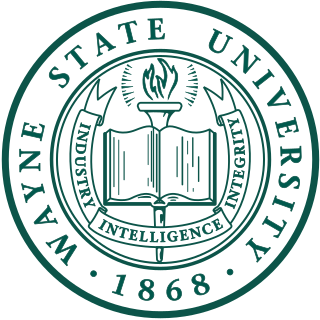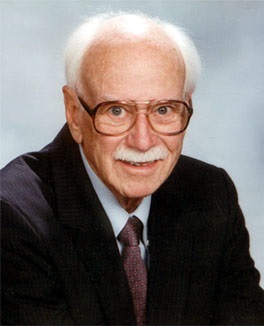Related Research Articles

Fencing is a combat sport that features sword fighting. The three disciplines of modern fencing are the foil, the épée, and the sabre ; each discipline uses a different kind of blade, which shares the same name, and employs its own rules. Most competitive fencers specialise in one discipline. The modern sport gained prominence near the end of the 19th century and is based on the traditional skill set of swordsmanship. The Italian school altered the historical European martial art of classical fencing, and the French school later refined that system. Scoring points in a fencing competition is done by making contact with an opponent.

Mississippi State University for Agriculture and Applied Science, commonly known as Mississippi State University (MSU), is a public land-grant research university in Mississippi State, Mississippi. It is classified among "R1: Doctoral Universities – Very High Research Activity" and has a total research and development budget of $239.4 million, the largest in Mississippi.

Michigan State University is a public land-grant research university in East Lansing, Michigan, United States. It was founded in 1855 as the Agricultural College of the State of Michigan, the first of its kind in the country. After the introduction of the Morrill Act in 1862, the state designated the college a land-grant institution in 1863, making it the first of the land-grant colleges in the United States. The college became coeducational in 1870. Today, Michigan State has facilities all across the state and over 634,000 alumni.

Wayne State University (WSU) is a public research university in Detroit, Michigan, United States. Founded in 1868, Wayne State consists of 13 schools and colleges offering approximately 375 programs. It is Michigan's third-largest university with nearly 24,000 graduate and undergraduate students. Wayne State University, along with the University of Michigan and Michigan State University, compose the University Research Corridor of Michigan. Wayne State is classified among "R1: Doctoral Universities – Very high research activity".

Montana State University (MSU) is a public land-grant research university in Bozeman, Montana. It enrolls more students than any other college or university in the state. MSU offers baccalaureate degrees in 60 fields, master's degrees in 68 fields, and doctoral degrees in 35 fields through its nine colleges. More than 16,700 students attended MSU in the fall 2019, taught by 796 full-time and 547 part-time faculty. In the Carnegie Classification, MSU is placed among "R1: Doctoral Universities – Very high research activity", one of only two universities to receive this distinction with a "very high undergraduate" enrollment profile. The university had research expenditures of $257.9 million in 2024.
MaestroCsaba Elthes was a fencing master who emigrated to the U.S. Elthes trained many Olympic competitors in the 1960s through 1980s, including the only U.S. Olympic fencing medalist of the period, Peter Westbrook.

Herbert Owen Reed was an American composer, conductor, and author.
Allan S. Kwartler, born in New York City, was an American sabre and foil fencer. He was Pan-American sabre champion, 3-time Olympian, and twice a member of sabre teams that earned 4th-place in Olympic Games.

The Michigan State Spartans are the athletic teams that represent Michigan State University. The school's athletic program includes 23 varsity sports teams. Their mascot is a Spartan warrior named Sparty, and the school colors are green and white. The university participates in the NCAA's Division I and the Football Bowl Subdivision for football. The Spartans participate as members of the Big Ten Conference in all varsity sports. Michigan State offers 11 varsity sports for men and 12 for women.

Michigan State University (MSU) offers over 200 academic programs at its East Lansing, Michigan campus. MSU is well known for its academic programs in education and agriculture, and the university pioneered the studies of packaging, horticulture and music therapy. MSU has one of the premier hospitality schools in the United States, and the study abroad program is one of the largest of any university in the nation, offering more than 300 programs in more than 60 countries on all continents, including Antarctica. MSU's Office of the University Ombudsperson is the oldest continually operating ombudsman office at a college or university in the country. Its most popular undergraduate majors, based on 2021 graduates, were:

The Michigan State Spartans football program represents Michigan State University (MSU) in college football at the NCAA Division I Football Bowl Subdivision (FBS) level. The Spartans are members of the Big Ten Conference. Michigan State claims a total of six national championships, including two from the major wire-service: AP Poll and/or Coaches' Poll. The Spartans have also won eleven conference championships, with two in the Michigan Intercollegiate Athletic Association and nine in the Big Ten.

Charles Edward Dvorak was an American track and field athlete who specialized in the pole vault. He attended the University of Michigan where he competed for the Michigan Wolverines men's track and field team from 1900 to 1904. He participated in the 1900 Summer Olympics where he was a favorite in the pole vault. However, he missed the competition after being told by officials that the finals would be held on a Sunday. He won a special silver medal in a consolation competition. In 1903, he set a world's record in the pole vault with a jump of 11 feet, 11 inches.(This mark doesn't appear in the progression of World or American Records). Dvorak returned to international competition and won the gold medal in the pole vault at the 1904 Summer Olympics. Dvorak later served as a high school football, basketball and track coach in Seattle, Washington, where he died in 1969 at age 91.
Byron Lester Krieger was an American foil, sabre and épée fencer. Krieger represented the United States in the Olympics in 1952 in Helsinki and 1956 in Melbourne, and in the 1951 Pan American Games where he won two gold medals.

Clarke Currie Scholes was an American competition swimmer and Olympic champion.

Ferenc Marki was an internationally known fencing master and fencing coach.

Stefano Cerioni is an Italian foil fencer, Olympic team champion in 1984, Olympic champion in 1988 and World team champion in 1985 and 1994. He became a fencing master, then a director of foil, first for Italy, then for Russia, then again for Italy.

George Piller was an Olympic and world champion fencer from Hungary in the 1920s and 1930s who became an internationally respected world-class fencing master in Hungary and the United States in the 1950s.

Dennis Keene Fitzpatrick was an American track coach, athletic trainer, professor of physical training and gymnasium director for 42 years at Yale University, the University of Michigan, and Princeton University (1910–1932). He was considered "one of the pioneers of intercollegiate sport".
Marcello Lodetti graduated in 1959 from the Accademia Nazionale Magistrale (ANS) and started fencing at the age of 7 at the Mangiarotti fencing club in Milano, near the Giuseppe Verdi conservatory. He then became a pupil of Giuseppe Mangiarotti, who had himself been a pupil of Renaud.
References
- 1 2 3 "Coach Leaves Fencing Legacy". The Argus Press. April 23, 1982. Retrieved July 10, 2012.
- ↑ "Schmitter, Charles R." Museum of American Fencing. Archived from the original on June 26, 2012. Retrieved July 10, 2012.
- ↑ "Maestro Charles Schmitter". Okemos High School Fencing Club. Retrieved July 10, 2012.
- ↑ Associated Press (December 15, 1949). "Michigan State Sidelines..." Ludington Daily News. Retrieved June 9, 2015.
- ↑ "Charles R. Schmitter, 1907-2002". Kuro5hin. Retrieved July 10, 2012.
- ↑ "Notes And Quotes And Anecdotes". The Toledo Blade. February 28, 1960. Retrieved July 10, 2012.
- ↑ Oberg, Chris. "My recollection of Maestro Schmitter". Michigan State University. Retrieved July 10, 2012.
- ↑ "Michigan State University Libraries: Special Collections". MSU Libraries. Archived from the original on July 11, 2012. Retrieved July 10, 2012.